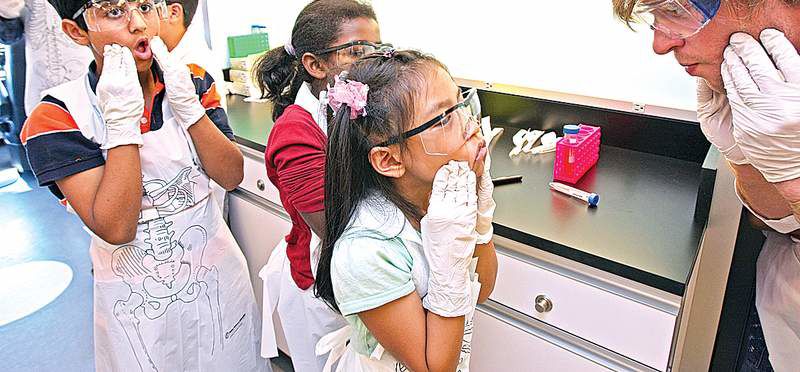Mobile science lab is rolling across Washington
Published 5:00 am Thursday, September 24, 2009

- Brianna Tran, center, loosens material in her mouth before giving a saliva sample Tuesday at Northgate Elementary School in Seattle.
SEATTLE — The science-lab-on-wheels rolled up to Seattle’s Northgate Elementary on Tuesday, and fourth- and fifth-graders, looking like miniature scientists in aprons, latex gloves and safety glasses, successfully isolated their DNA.
It was the first trip for the Science Adventure Lab, a project of Seattle Children’s hospital, and one of 50 planned school visits ranging from Neah Bay on the northwestern tip of the Olympic Peninsula to Onion Creek in the far northeast corner of the state.
Trending
Too few students are choosing careers in science and health, Seattle Children’s scientists say, and the mobile lab is one way to try to change that.
The vehicle is hard to miss. It’s a 45-foot-long rolling billboard for science, adorned with colorful illustrations of a brain cell, a virus, red blood cells. Inside, it’s a small version of the labs used by researchers at Children’s, with smooth, gray lab tables, and sophisticated equipment such as centrifuges and micropipettes, respirometers and heat blocks.
The lessons are designed to give students in grades four through eight a taste of what scientists do, and increase their knowledge about their health.
“This exposes kids to what a real research lab is like,” said Amanda Jones, the lab’s director and a microbiologist.
The DNA experiment done at Northgate Elementary, for example, was a simplified but real version of what grown-up scientists do.
“I’m pretty surprised that it was possible for us to do it,” said 9-year-old Brianna Tran, holding a black card on which she’d swabbed a piece of her DNA to take home.
Trending
Her fourth-grade class — the second ever to use the bus — spent about an hour Tuesday gathering cells from inside their cheeks (by rubbing their cheeks against their teeth), spitting into a tube, then taking that saliva through a series of steps using chemicals, heat and cold to break open the cheek cells and isolate, then clump the cells’ DNA.
The end result was a stringy, slimy-looking substance that elicited a few “eews.”
Afterward, fourth-graders Shaylon Williams and Jakob Schreiner declared the experiment “awesome” and “cool.”








